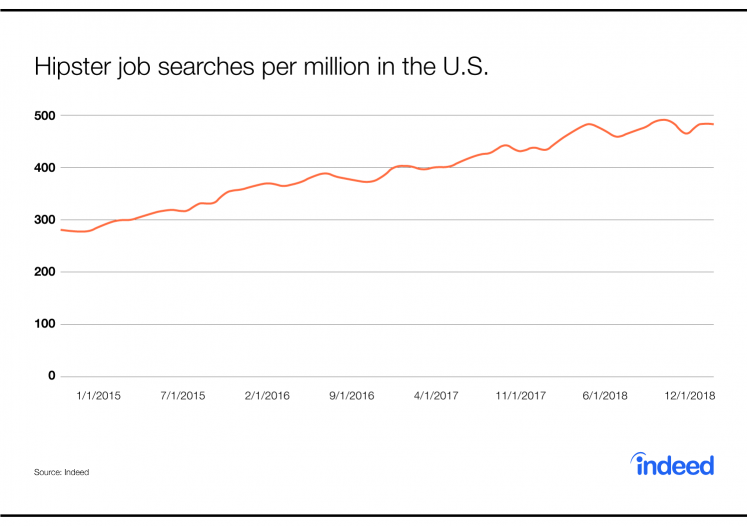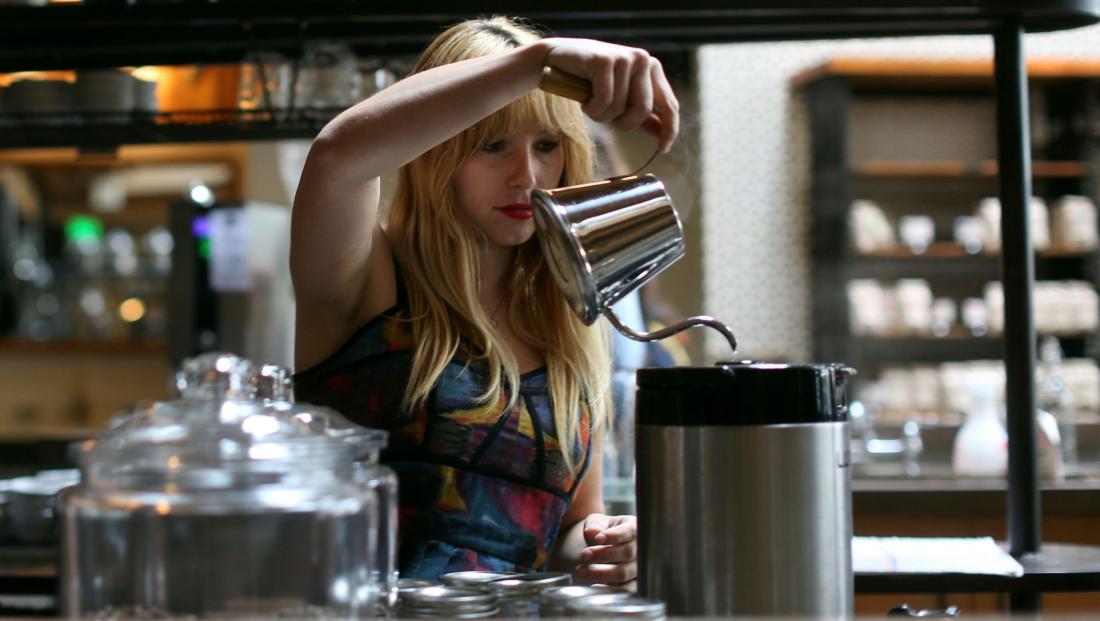“Hipster jobs” is not yet an official occupational category at the Bureau of Labor Statistics, but that doesn’t mean the grouping does not exist. Hipsters, in their current Brooklyn-born, globally adoptediteration, have been around for a couple of decades, growing seemingly exponentially. And though it may be a generalization, their tastes have arguably created a market for specific jobs in the craft economy—say designing jewelry, tattoos, or clothes—and in niche food services, making pour-over coffees, craft beer, and vegan faux-treats, like fōnuts.
Researchers at Indeed.com, the job board site, recently tried to identify “hipster jobs” and measure their popularity by analyzing search patterns. They found that in the US between 2015 and 2018, there was a 57% increase in searches for jobs they tagged as hipster. In their definition, which they admitted relied on stereotypes, this included searches that involved worlds such as “vegan;” “yoga;” “organic” (in combination with farm, food, and gardening, etc.); “coffee” (combined with “independent,” “specialty,” “artisan,” etc.); “vintage;” “pop up;” and “craft;” plus any form of beer, brew, or brewery. See Indeed’s full list of hipster jobs here.
Between 2015 and 2018, job searches including the terms above increased by 57%, the analysts found. Within that group, “yoga” was the runaway winner as the most popular hipster job search term in the last six months of 2018, followed by tattoo, vegan, distillery, and craft beer. (In Canada, the results were similar, except “vegan” outranked “tattoo.”)

In its elaboration on the trends driving hipster job demand, Indeed suggested these searches were popular with millennials (born between 1981 and 1996), who probably make up the bulk of hipsters right now, as they make up the bulk of our population period. The site’s data doesn’t actually track who is searching for these jobs, however, so we can expect some Gen-Z searchers are in the mix, as well as many Gen-Xers, whose rebellious contingent seeded the market for today’s hipster jobs and products. (Let’s recall the premise behind Portlandia, television’s eight season-long comedic send-up of hipster culture: “The dream of the ‘90s is alive in Portland.”)
It’s also probably about the same emotional response to today’s tech-saturated, overly commodified world that has made mead-brewing or upcycling so attractive to young people, while endearing the broader “craft economy” to consumers. “Craft businesses are poised to play a pivotal role in the global economy—not to mention individual wellbeing—as workers gradually flip the script on the 21st-century workplace,” the publication European CEO recently declared, citing an estimate from the Association for Creative Industries that showed US consumers spending $43 billion in the craft economy in 2017.
Hipsters are criticized for belonging to a counterculture movement that doesn’t counter much of anything. Even its rejection of capitalism and consumerism is incremental, grounded in alternative forms of consuming, rather than a complete rejection of it. Still, the fact is there’s a strong longing in the marketplace for tactile experiences with products whose development and separate ingredients we can trace and understand. People are still buying physical books for instance, and other low- or no-tech products, to counteract the screen time our jobs force us to endure, and the endless, ever-refreshing stream of news and information we’re expected to absorb. It’s not a surprise that ways to earn an income that also slow down time, are usually kinder to the earth, and offer closer connections to other people are more popular than ever.

